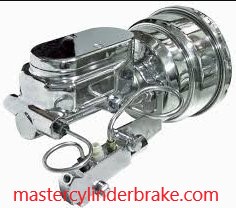Power brakes are nothing without a brake booster and master cylinder combination. This safety upgrade enhances pedal feel while helping reduce stopping distances.
Brake boosters, also referred to as vacuum assist brake boosters, use the engine’s vacuum to add additional force on the brake pedal. These boosters come in single or dual diaphragm designs.
⚡️Another article: Go-Kart Brake Master Cylinder
Brake Booster
The brake booster is an integral component of your vehicle’s braking system. Functioning to increase pressure before it reaches the master cylinder, this booster increases braking force by relieving driver effort.
Brake boosters are a standard feature in many passenger cars, as well as some light trucks and vans. Usually made up of metal canisters with a diaphragm separating two chambers, these boosters provide extra stopping power when applied.
When air is forced into an engine through the intake valve, each chamber experiences a sudden drop in pressure that creates a vacuum. This vacuum hose connects to one side of the booster (facing brake pedal) and the master cylinder piston on the other end.
When the brake pedal is depressed, a rod moves through the center of the diaphragm, pushing a valve that allows atmospheric pressure into the booster. As air pulls on this diaphragm, it increases its motion and multiplies the braking force sent to the master cylinder.
Master Cylinder
The master cylinder is the component of your brake system that converts non-hydraulic pressure from the pedal into hydraulic pressure for use on either your drum or caliper. This conversion occurs via a reservoir of fluid stored within its bore.
The reservoir is connected to the cylinder via an inlet valve that supplies brake fluid when necessary. The cylinder features two pistons separated by a spring, which act on the pushrod to compress and apply hydraulic pressure to the brake line.
Some master cylinders also feature a check valve to maintain proper pressure levels for soft, smooth brake pedal feel when applied while preventing it from becoming hard and aggressive. This safety feature helps ensure your vehicle’s brakes aren’t compromised due to a leak in the master cylinder.
Brake Lines
When you press down on the brake pedal, a hydraulic fluid is forced from your master cylinder to all four wheel calipers. This fluid compresses pistons inside each caliper, causing brake pads to come together and gradually slow down your car.
Brake lines, the piping that transfers pressure, are known as brake lines. Brake lines vary in size, diameter and material from vehicle to vehicle.
Brake lines are typically constructed of steel to withstand extreme pressure and exposure to elements. Unfortunately, over time they may weaken or develop leaks.
Performance brake hoses can also be made of different materials, like braided carbon fiber or Kevlar. Although more costly, these offer greater resistance to expansion under heavy use and are ideal for off-road applications and racing on the track. Furthermore, these hoses tend to have less corrosion issues than standard aluminum, stainless steel or steel hoses do.
📢Read also: MG Brake Master Cylinder
Brake Pads
Drivers pressing the brake pedal exert pressure and friction that converts kinetic energy into braking power, helping to stop their vehicle without causing too much damage to rotors or needing extensive brake repairs. This step is essential for stopping without skidding off the road surface.
There is a vast selection of brake pads available on the market, each with their own advantages and drawbacks. They can be constructed from non-metallic materials, metallic alloys or semi-metallic compounds.
They can also be equipped with a wear indicator that fades away when the pad material becomes too thin to safely stop your car. Some cars also feature sensors that cause brakes to squeal or illuminate a dashboard warning light when new pads need replacing.
Selecting the correct pads for a vehicle’s longevity is paramount, so take some time to learn about them. In the end, these components help guarantee both you and your passengers’ safety on the road.
🚀Recommended article: Brembo KTM Duke 390 Rear Brake Master Cylinder
